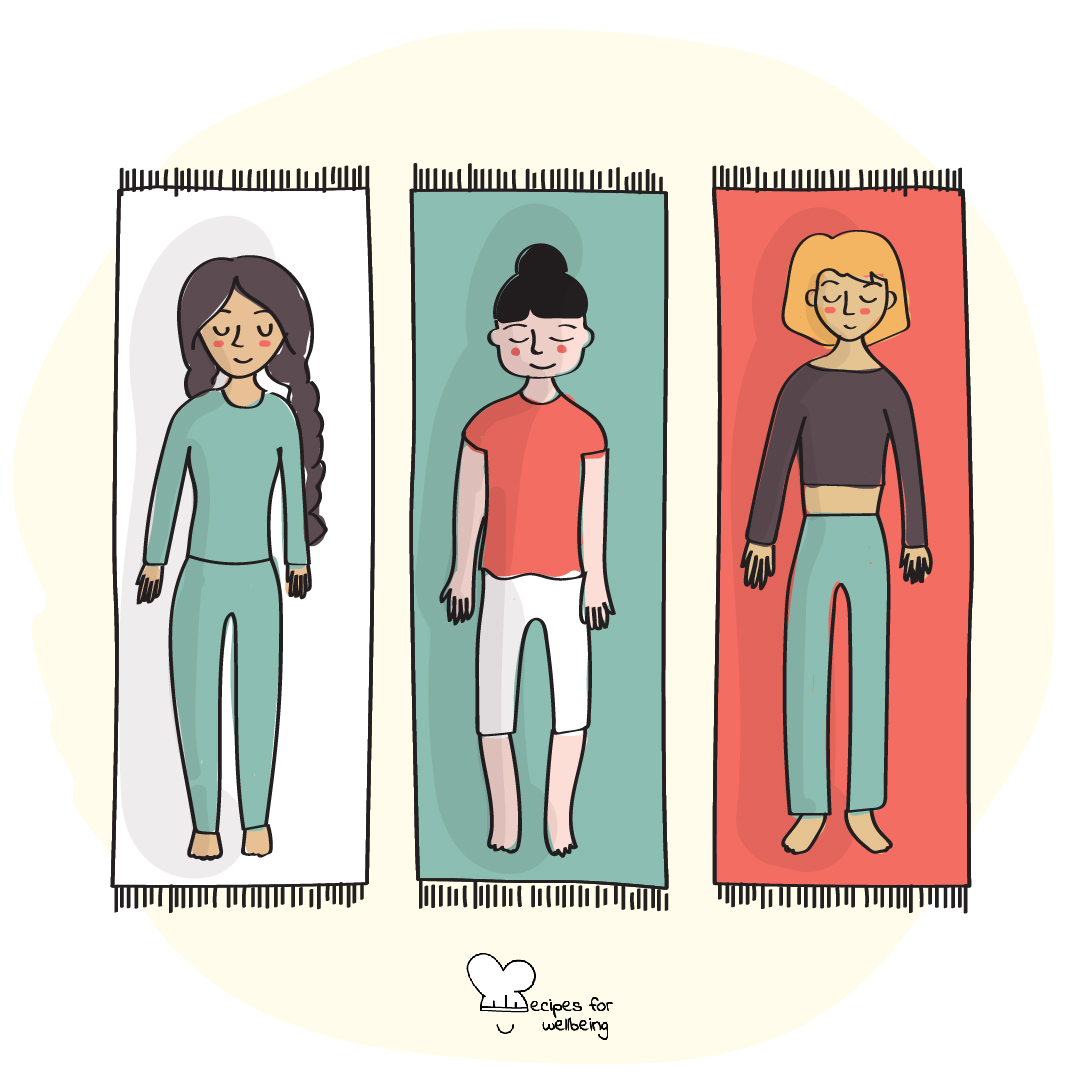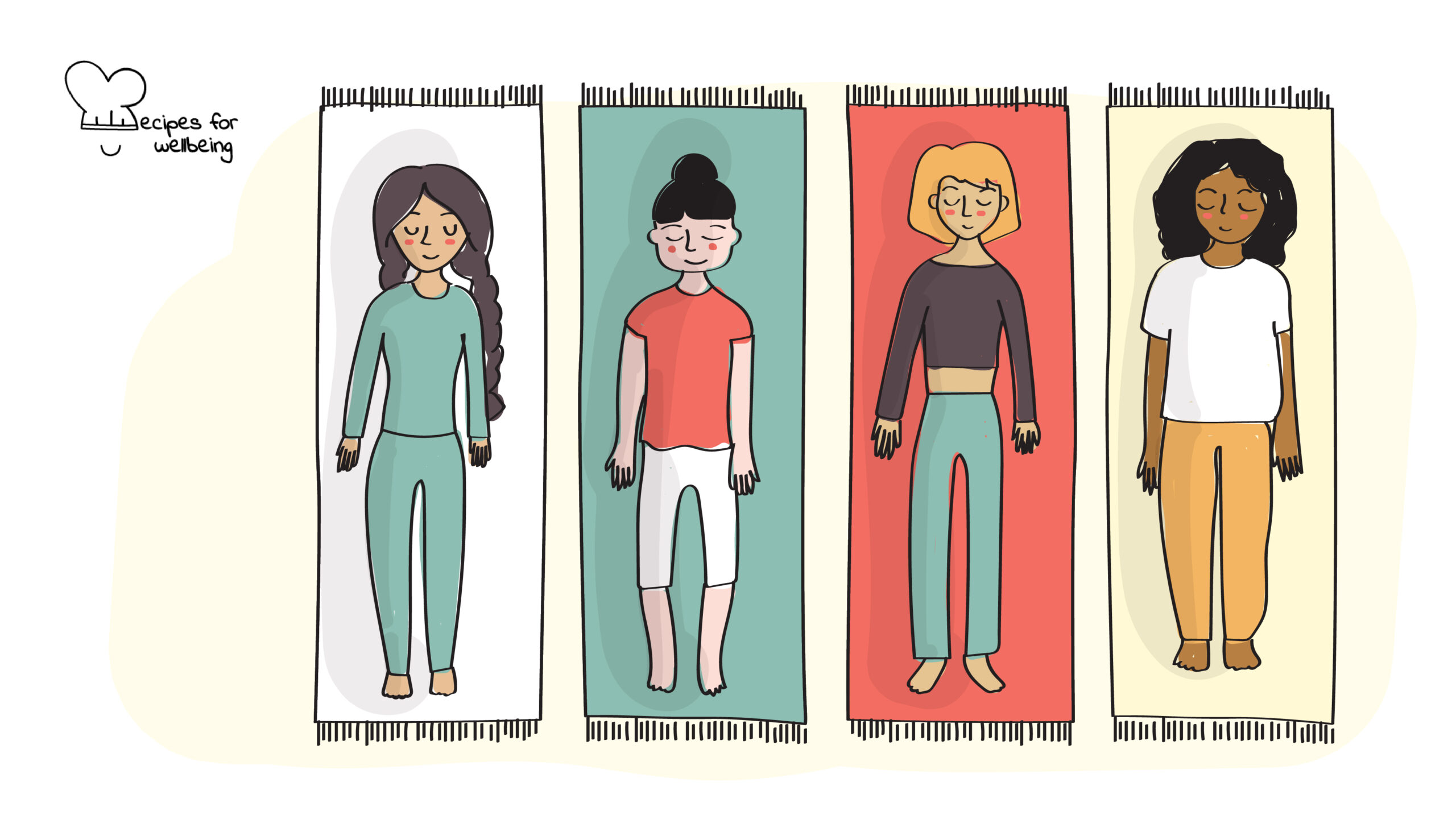
Mindful check-in
Whatever the present moment contains, accept it as if you had chosen it. ―Eckhart Tolle
👥 Serves: 11-25 people, 2-10 people, 26-40 people, 41+ people
🎚 Difficulty: Easy
⏳ Total time: 1-10 minutes
🥣 Ingredients: A quiet place with no distractions, “A mindfulness-based stress reduction workbook for anxiety” book by Bob Stahl (if you’re curious to find out more about it!)
🤓 Wholebeing Domains: Awareness, Community
💪 Wholebeing Skills: Acceptance, Centring, Check-in, Mindfulness, Multiperspectivity, Non-judgement, Presence, Self-awareness

Mindful check-in
📝 Description
A brief mindfulness check-in practice.
Check-ins are common best-practices in many changemaking circles already, but mindful check-ins add a new quality to the experience. This brief formal mindful practice helps you – and your team – check in with how you are feeling in the present moment and acknowledging what emerges in the here and the now. It invites you to notice your state of mind and any thoughts that might be arising; your state of body and any physical sensations you might be experiencing; and your state of heart and any emotions that might be present for you.
The following practice has been adapted from the book A Mindfulness-Based Stress Reduction Workbook for Anxiety by Dr Bob Stahl. In the book, various experts provide mindfulness meditations and exercises to help soothe anxiety, understand common triggers, and live more fully in the moment. Developed by Jon Kabat-Zinn, MBSR is a powerful, evidence-based treatment model that fuses mindfulness meditation and yoga, and has been proven effective in treating a wide range of chronic disorders and diseases. The mindfulness practices in MBSR help you cultivate a greater awareness and connection between your body and mind, and can help you identify and move past the toxic thoughts, feelings, and behaviours that lie at the root of your anxiety.
We suggest trying to incorporate this practice into your daily routine for best results. If possible, find a quiet space to do this practice where you won’t be distracted or disturbed. Close the door, silence your phone… do whatever you can to create the most comfortable environment for you (and your team). You can do this practice either lying down or sitting but we encourage taking a seated position as this way it can be easily replicated at work with your team. And if you prefer to listen to Dr Stahl guiding you through the practice, please visit https://soundcloud.com/mindfulmagazine/mindful-check-in.
👣 Steps
Step 1 – Preparation (30’’)
Adopt a sitting position that makes you feel alert and comfortable, either sitting on a chair with your feet fully planted flat on the ground, or sitting cross-legged on the floor, or in a kneeling posture. Make sure your back is straight but relaxed, neck long, and hands resting on your legs or lap. When you are ready, gently close your eyes or if you are not comfortable closing your eyes, gently soften and lower your gaze.
Step 2 – Breathe deeply (30’’)
Now take a few deep breaths, in through the nose, and out through the mouth. As you breathe in, feel the lungs expanding and filling with fresh air. As you breathe out, feel your lungs emptying and your body relaxing and sinking into the chair or the floor beneath you.
Step 3 – Appreciate your time (1’)
The next time you exhale, bring your breathing back to its normal rhythm, in and out through your nose. At this point, take a moment to appreciate yourself for giving yourself the time and space to do this practice.
Amidst the hustle of our daily demands, it’s rare for people to consciously and deliberately set aside even a few minutes to just see how they are. Most people are more apt to do this for a close friend, their children, or their partner. Turning this generosity toward yourself warrants some acknowledgment and recognition.
With this small gesture, you’re exercising a shift: resisting the tendency to just move along and instead making time and space to take care of yourself. You’re making and honouring an intention to see what’s really within you.
Step 4 – Attend to the moment (3’)
Now bring your full attention to the experiences of your body, your mind, and any thoughts or emotions that you’re aware of, just as they are.
There’s no need to judge, analyse, evaluate, or assess your experience. The focus here is simply being with yourself fully, in the present moment and letting it all be.
If a tendency to judge or figure things out arises, simply notice and acknowledge that, then gently return awareness of how you are.
Continue directing your attention to the experiences of your body, mind, and emotions for about three minutes.
Step 5 – Acknowledge yourself (1’)
Slowly bring your awareness back to the breath and listen to the quality of your breathing. Do not force it, simply follow it gently.
As your practice comes to a close, once again acknowledge your willingness to show up and be present to yourself and for yourself, knowing that, in this way, you’re contributing to your wholeness and wellbeing.

